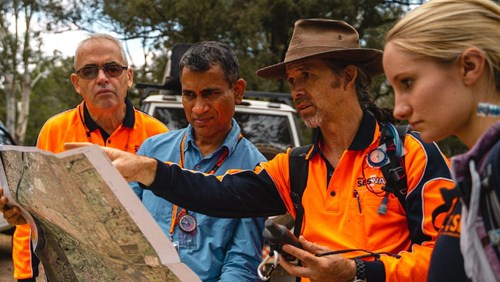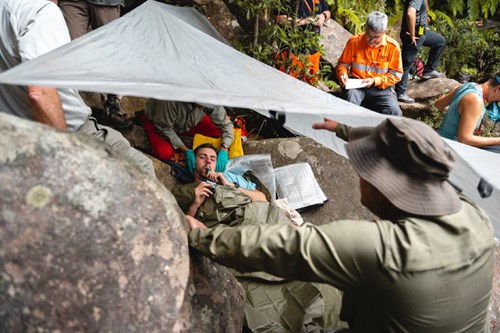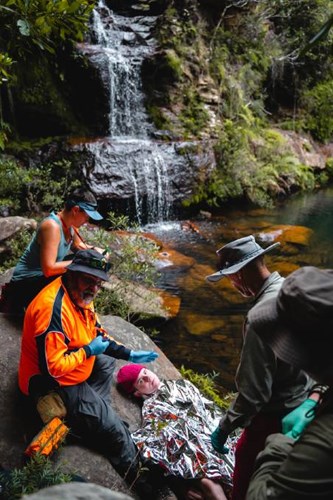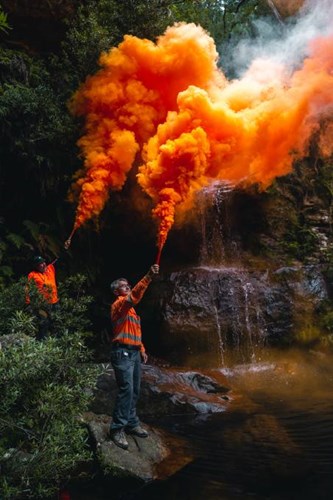
Volunteers from the NSW SES Blue Mountains Unit recently took part in an intense two-day training course about providing advanced first aid in remote situations.
“We train in a number of different elements in the course that include treating severely hypothermic patients, complex fractures, advanced anaphylaxis and pain management where the patient maybe in a dangerous and remote location when a threat to life is imminent,” said Mr Bennet.
“For example, we could have emergency workers and volunteers in a bushfire, flood or near a cliff edge and need to work on a patient at the same time. The skills we provide in this course will help them through such dangerous situations.”

Sixteen SES volunteers completed the course, which also included basic survival technics such as water purification methods, cooking and food options and able to make a shelter. To test their skills, the volunteers were given a four-hour scenario were participants were required to respond to a simulated personal locator beacon activation within the national park near Glenbrook.
The team had to navigate their way there through the bush where they located three casualties that had simulated major injuries and suffering the impacts of being stranded overnight. On locating the missing persons, the team then had to render medical assistance to the casualties over a prolonged time period, build a temporary shelter, communicate using satellite devices and use flares and smoke devices to mark their location for incoming aircraft.


The SES volunteers were mentored through the course with voluntary assistance of Army and NSW Ambulance paramedics as well as members from the SES Bush Search and Rescue Unit.
SES Commander John Hughes also acknowledged support from National Parks and Wildlife Service to help make the course a success.
This article was originally published in the and was republished here with permission.






